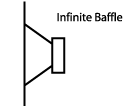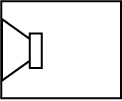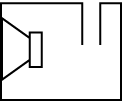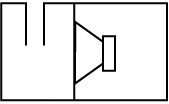Vanquish
Club Guest
- Joined
- Dec 7, 2004
- Messages
- 2,117
- Points
- 0
Subwoofers are larger drivers that are used to create the frequencies around and below 100Hz. Ordinary loudspeakers are unable to effectively produce frequencies in this range due to size limitations of the driver. Subwoofers are generally considered speakers of 8" or larger and will require more amplifier power than coaxial or component loudspeakers due to their larger size. Subwoofers will also require an enclosure to produce these lower frequencies effectively. Sometimes the enclosure can be as simple as the trunk of a sedan or as complex as a series-tuned dual-reflex band pass enclosure. The cone size and enclosure required will be two very important factors when deciding on a subwoofer for your system. There are several manufacturers that offer non-typical subwoofer applications. Examples are the tube type subwoofer and the vehicle specific subwoofer system. Tube subwoofers are cylinders (tubes) with one end containing the subwoofer and the other end sealed. These are a fairly common way of adding a subwoofer to a limited space application or a leased vehicle and come in self-amplified varieties as well. Vehicle specific subwoofer systems are usually built from wood and fiberglass and are designed to fit snugly into a factory void or pocket. Because they are specific to one vehicle they are more expensive then either a standard box or tube configuration. However they can’t be beat for fit and use of space. One final note when purchasing a subwoofer. Determine how much space you are willing to give up and then decide what subwoofer you want. You don’t want to decide you want two 15” woofers and then realize they won’t fit in your Geo Metro after you're out of the store. Be realistic about your goals for the system and the space you are willing to sacrifice to achieve those goals. If you want strong bass but have limited space, add more power to your subwoofer system. Aspects and features that need to be considered when purchasing subwoofers are: Enclosure Type: This is the type of box or enclosure your subwoofer will be mounted in. The main types are infinite baffle, sealed, vented (ported), and bandpass.Power Handling: This is the amount of power a speaker can withstand before failing after a given amount of time. The most important number is the speakers continuous or RMS power handling. Peak power handling means virtually nothing.Sensitivity: This is a reference measure of how loud a speaker will be with a certain amount of power at a certain distance. The standard is one watt at one meter. By halving the distance an increase of six decibels will be realized and doubling the power will increase the output by another three decibels. This is a trick used by some companies to make their speakers appear more efficient than they are. Most loudspeakers will be in the ninety decibel range. Keep in mind that a difference of three decibels is equivalent to a doubling of the amplifier Note : Please remember to check the sub type from the voice coil point of view. A double voice coil sub DVC generally offers more wiring flexibility and configuration set up. For example, a DVC 4 ohm sub can be wired to present either a 2 ohm or 8 ohm load to an amp. A DVC 2 ohm sub on the other hand can be wired to a 4 ohm or 1 ohm load. Here's a close up pic of a subwoofer ... the stunning Image Dynamics IDMax.




